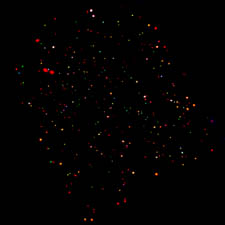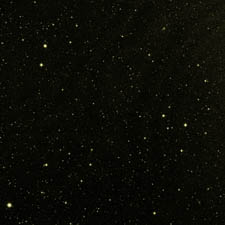Imagine the Universe News - 17 March 2005
New Black Hole Census Reveals Major Undercount and Great Extinction
| 17 March 2005 |
Scientists using NASA's Chandra X-ray Observatory and other world-class facilities have discovered that the total number of massive black holes in the Universe is 75 percent more than what was previously estimated. This new black hole census, a compilation of five years of observations, dramatically alters theories of how galaxies form and evolve.
Among the new, surprising findings: quasar activity did not peak in the early Universe but rather more recent; the largest black holes formed before the smaller ones; most black hole activity cannot be detected by optical telescopes; and a period of great extinction occurred about six billion years ago, when, like the dinosaurs, the most voracious black holes mysteriously disappeared. A team led by Dr. Amy Barger of the University of Hawaii in Honolulu presents these results in an upcoming issue of The Astronomical Journal. These results are supported by several independent science teams, whose results will soon be published.
These new results show that scientists underestimated just about everything concerning black hole evolution -- that is, when and how they form, how many there are, and how energetic they are. X-ray telescopes showing phenomena missed by even the most powerful optical and radio observatories.

|
| An artist's rendition of a galaxy with a supermassive black hole at its core. Such a galaxy is called an Active Galactic Nucleus (AGN). (Illustration: NASA) |
"This result represents a major paradigm shift," said Dr. Richard Mushotzky of NASA Goddard Space Flight Center in Greenbelt, Md., a co-author. "The what, when, why, where, and how -- we had it all wrong."
Barger's team discovered a multitude of Active Galactic Nuclei (AGN). These are galaxies, such as quasars, with exceedingly bright cores. The central engine creating this light is a supermassive black hole with the mass of millions to billions of suns compressed within a region no larger than our Solar System.
The team compared Chandra X-ray observations with optical and ultraviolet observations from the Hubble Space Telescope and other telescopes. The side-by-side comparison revealed that Chandra was detecting sources that Hubble and others couldn't see. Optical surveys had looked nearby and found but a few supermassive black holes. Deeper optical surveys of regions of space more than six billion light years away also didn't reveal many black holes. This is because the light has been snuffed out by dust and gas around the black holes. What scientists had been seeing, apparently, were only the brightest AGN from afar, such as quasars, and relatively small supermassive black holes nearby.
The largest black holes, with the mass of billions of suns, are most easily visible to optical telescopes, perhaps because they have burned off obscuring material. Slightly smaller black holes, with the mass of about 10 million to 100 million suns, are visible to optical and radio telescopes only when they are very close to us -- that is, close enough for these telescopes to detect the weak signal getting through obscuring material.
These Chandra data show this underrepresented 'middle class' of massive black holes. This population makes up the clear majority of black holes, which was not known until these observations.
This black hole activity peaks at about 6 billion years ago (at z=1, a redshift measurement related to distance). This was a major finding of the census. Optical studies had revealed a peak much earlier, at about 11 billion years ago (or redshift 2.5). This implies that the largest black holes seen optically "turned on" long before the slightly smaller ones.
The Chandra observations next revealed a great and rapid extinction starting about 6 billion years ago. That's when most of these black holes "turned off" -- that is, stopped accreting matter and giving off copious amounts of light. Perhaps this is because they had pulled in all the matter that they could from the region.
"Only the smaller black holes, which turned on later, appear to actively pull in matter today," said Dr. Lennox Cowie of the University of Hawaii, another team member. "A period six billion years ago marks the beginning of the end of the most massive ones."
The team noted that the recently launched Spitzer Space Telescope may support these results through observations of infrared light reflected from dust around black holes.
Other members of the science team are W. Wang and Peter Capak, also at the University of Hawaii; Yuxuan Yang of the University of Maryland, College Park; and Aaron Steffen of the University of Wisconsin, Madison.



